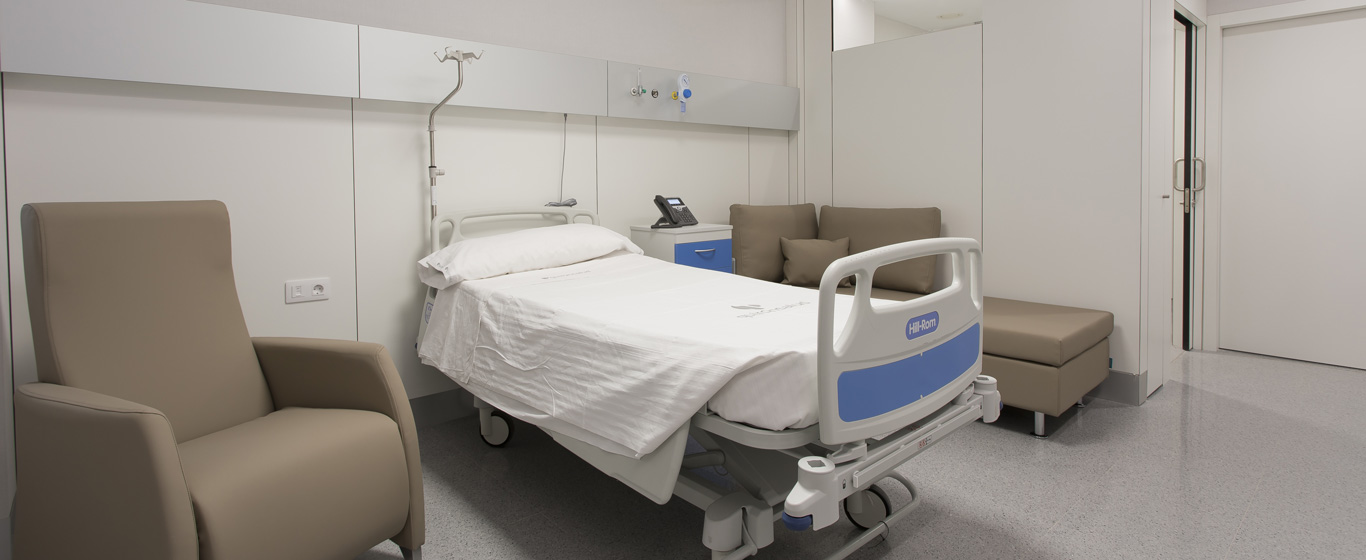Myopia
What is myopia? Everything about its causes, risk factors, and the best treatments to correct a nearsighted eye.
Symptoms and Causes
Myopia is a refractive error that causes difficulty in seeing distant objects clearly. In a nearsighted eye, distant objects appear blurry because the light entering the eye does not focus on the retina but in front of it.
There are generally two types of myopia:
- Simple myopia: The most common form, caused by an alteration in the cornea, lens, axial length, or anterior chamber depth. It usually appears in childhood and increases for some time before stabilizing in adulthood. It typically does not exceed six diopters.
- High, malignant, or pathological myopia: Caused by excessive elongation of the eyeball. Like simple myopia, it is usually detected around the age of five but continues to progress even into adulthood, exceeding six diopters. Due to its characteristics, it is considered a condition requiring continuous monitoring and specific precautions.
Today, myopia is easily corrected, allowing nearsighted individuals to lead normal lives and see objects at any distance.
Symptoms
The primary symptom of myopia is difficulty seeing distant objects, which appear blurry or distorted. The most common manifestations of this refractive error include:
- Squinting to see far away.
- Headaches, usually due to the effort needed to see clearly.
- Eye strain.
Causes
Myopia is caused by an alteration in the eye that makes light focus in front of the retina instead of on it, as in emmetropic eyes. Depending on the underlying cause of this refractive error, myopia is classified into different types:
- Axial myopia: The eyeball is longer than normal.
- Index myopia: Usually caused by cataracts that increase the power of the lens.
- Curvature myopia: The lens or cornea is more curved than usual.
- Mixed myopia: A combination of several of the above factors.
Several factors contribute to the development of myopia:
- Genetic factors, as it is hereditary.
- Environmental factors, such as spending too much time indoors or in front of screens.
- Other conditions, such as cataracts or diabetes.
Risk Factors
The main factors that increase the risk of developing myopia include:
- Genetic inheritance.
- Activities requiring prolonged near vision use.
- Excessive screen use, such as smartphones or tablets.
Complications
Complications typically arise when myopia is not detected in time and therefore not corrected. In such cases, it can lead to reduced safety when moving around or operating machinery, academic difficulties, or persistent eye strain.
High myopia may also cause other ocular diseases, such as glaucoma or retinal detachment.
Prevention
Due to its genetic component, myopia cannot be prevented. However, it is advisable to avoid excessive near vision strain, reduce screen use, and spend more time outdoors.
What doctor treats myopia?
Ophthalmologists diagnose and treat myopia. Pediatricians and general practitioners can also detect it during routine check-ups.
Diagnosis
Myopia is diagnosed through a visual acuity test. The most commonly used test is the Snellen chart, which involves identifying progressively smaller letters on a panel placed three to six meters away. The test is performed first with one eye, then the other, and finally with both eyes together.
Treatment
There are several treatments to correct myopia, allowing clear vision at all distances:
- Prescription glasses with concave lenses: These should be adjusted to the necessary diopters in each case to ensure light focuses on the retina.
- Contact lenses: These serve the same function as glasses but are placed inside the eye to provide clear peripheral vision.
- Orthokeratology lenses: Worn overnight to temporarily reshape the cornea, allowing clear daytime vision without glasses or contact lenses. The results are temporary.
- Laser surgery: A surgical technique using an Excimer or LASIK laser to permanently reshape the cornea.


































































































